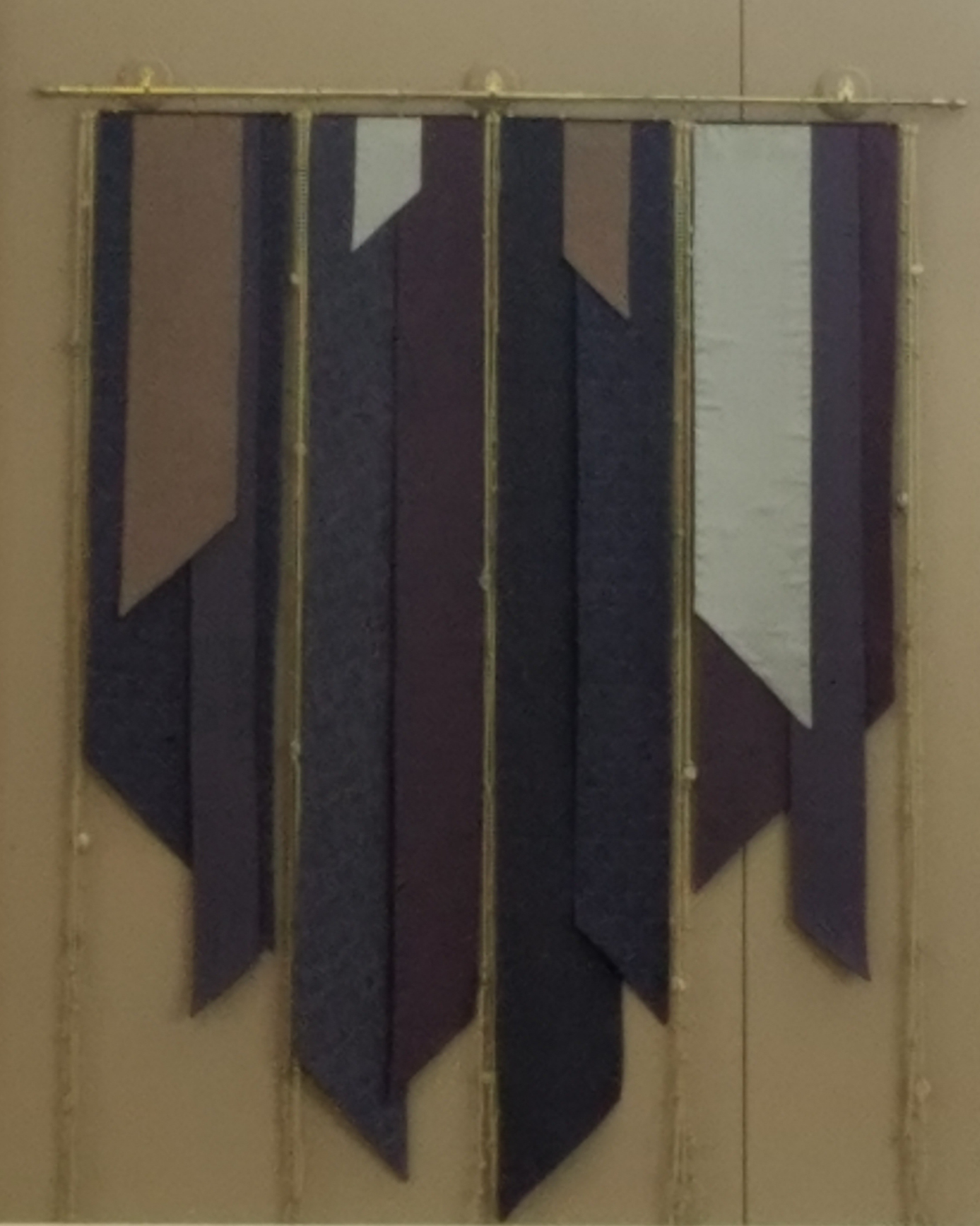The season of Lent provides a blessed opportunity for reflection as we approach the altar of our Lord’s sacrifice with hope in His mercy.
The seasonal wall hangings (paraments) reflect the themes and color of the liturgical seasons. The purple of Lent represents sorrow and repentance. Grey, the color of ashes, calls us back to Ash Wednesday, when we received this symbol of mourning and humility on our foreheads. The tan fabric suggests desert sands and the arid nature of sin.
The coarse ropes suspended between the fabric panels also carry symbolic meaning. The five groupings of ropes remind us of the five wounds Christ bore on the cross. The rope itself is a symbol of the betrayal of Christ as the soldiers bound him after the kiss of Judas. The stones, woven into the ropes, represent the sin that weighs down our souls. The knots in the ropes suggest the discord in our families, the hurts between married couples, and the absence of peace and joy caused by our pride and failure to depend on God. St. Ireneaus compared Eve and Mary when he said, “The knot of Eve’s disobedience was loosened by the obedience of Mary.” This symbolic use of the knot has been explored in a favorite painting of Pope Francis titled, “Mary Undoer of knots.” (Johann Georg Melchior Schmidtner, 1625-1705, Public domain, via Wikimedia Commons)
These paraments provide a visual reminder of the mercy God offers us not only in the Lenten Season but also throughout the entire year.


